Sports
The fastest nonprofessional age group IRONMAN triathletes in the world originate from Europe
Abstract Bale, J. Kenyan running before the 1968 Mexico Olympics. In East African Running (ed. Francis, T.) (Routledge, 2007). Introduction Institute of Primary Care, University of Zurich, Zurich, Switzerland Google Scholar González-Ravé, J. M., Hermosilla, F., González-Mohíno, F., Casado, A. & Pyne, D. B. Training intensity distribution, training volume, and periodization models in elite swimmers: […]
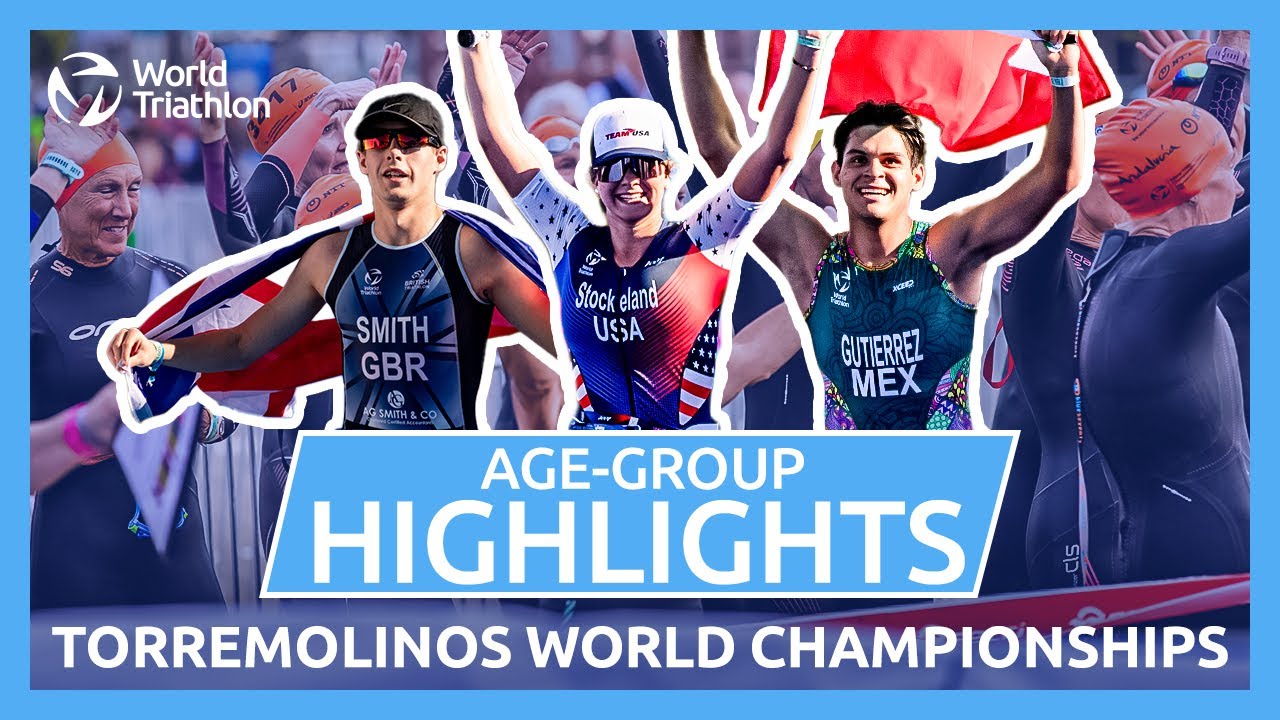

Abstract
Introduction
Google Scholar
González-Ravé, J. M., Hermosilla, F., González-Mohíno, F., Casado, A. & Pyne, D. B. Training intensity distribution, training volume, and periodization models in elite swimmers: A systematic review. Int. J. Sports Physiol. Perform. 16(7), 913–926. https://doi.org/10.1123/ijspp.2020-0906 (2021).Article
PubMed
MATH
Google Scholar
CAS
PubMed
Google Scholar
Differences between women and men considering race course characteristics.An important finding was that optimal air temperature ranged between 19 °C and 21 °C or at 25–28 °C and optimal water temperature was at 23–25 °C. To date, we have no specific knowledge for the ‘best’ temperatures to compete in an IRONMAN triathlon. It is, however, well known that environmental conditions have a considerable influence on endurance performance in running39 and triathlon40 where especially high temperatures impair endurance performance41. Regarding IRONMAN Hawaii, it has been reported that body core temperature increased during the marathon where an increase in body core temperature appeared to make triathletes run more slowly42. The present study shows the optimum race temperatures for both cycling and running where athletes can now select the most appropriate race course for a fast IRONMAN race time.
Methods
Ethical approval
Mantzios, K. et al. Effects of weather parameters on endurance running performance: discipline-specific analysis of 1258 races. Med. Sci. Sports Exerc. 54(1), 153–161. https://doi.org/10.1249/MSS.0000000000002769 (2022).
Data set and data preparation
Conceptualization: Beat Knechtle. Data curation: Beat Knechtle, Elias Villiger. Formal analysis: David Valero. Methodology: Beat Knechtle. Writing – original draft: Beat Knechtle, Mabliny Thuany. Writing – Editing: Katja Weiss, Thomas Rosemann, Pantelis T. Nikolaidis, Rodrigo Luiz Vancini, Marilia Santos Andrade.
Statistical analysis
PDP charts for water temperature in the swim course during race day.
Results
PubMed Google Scholar
Distributions of race finish times by sex
DOI: https://doi.org/10.1038/s41598-024-84008-9

PubMed Google Scholar
Ranking tables of event locations and tri-athletes’ countries of origin
The PDP chart is another tool we have to look into our model. PDP charts show how the output of the model varies for each numerical predicting variables (features or factors). According to the XG Boost model PDP charts, men are on average ~ 0.8 h faster than women (Fig. 4), and the fastest athletes are aged 25—34 years (Fig. 5). The XGBoost model shows that a representative set of European countries including Germany, Austria, Denmark, Belgium, Switzerland, Norway, Czechia, Estonia, and Slovenia are the fastest. The USA and a group of Asian countries including Philippines, Malaysia, and Thailand appear to be the slowest (Fig. 6). IRONMAN Hawaii is the IRONMAN race location with the fastest race times, but also IRONMAN Vitoria-Gasteiz and IRONMAN Hamburg are singled out by the XG Boost model among the fastest race courses (Fig. 7). Regarding temperatures, optimal air temperature ranged at 19–21 or 25–28°Celsius (Fig. 8), and optimal water temperatures at 23–25°Celsius (Fig. 9).This study aimed to identify the dominant nationalities for nonprofessional IRONMAN triathlon competitions between 2002 and 2020 with the hypothesis that the fastest IRONMAN age group triathletes would originate from the USA. The most important findings were (i) European countries (i.e. Germany, Austria, Denmark, Belgium, Switzerland, Norway, Czechia, Estonia, and Slovenia) have the fastest athletes, (ii) IRONMAN Hawaii, IRONMAN Vitoria-Gasteiz and IRONMAN Hamburg are the fastest races, (iii) optimal air temperature for cycling and running ranged between 19 °C and 21 °C or at 25–28 °C and optimal water temperature for swimming was at 23–25 °C, (iv) the fastest athletes were 25–34 years old, and (v) men were ~ 0.9 h faster than women. The discussion of these findings is challenging, especially due to the lack of evidence in the scientific literature. However, the main finding highlights the importance of adopting similar approaches in order to identify the most successful countries in sports competitions.
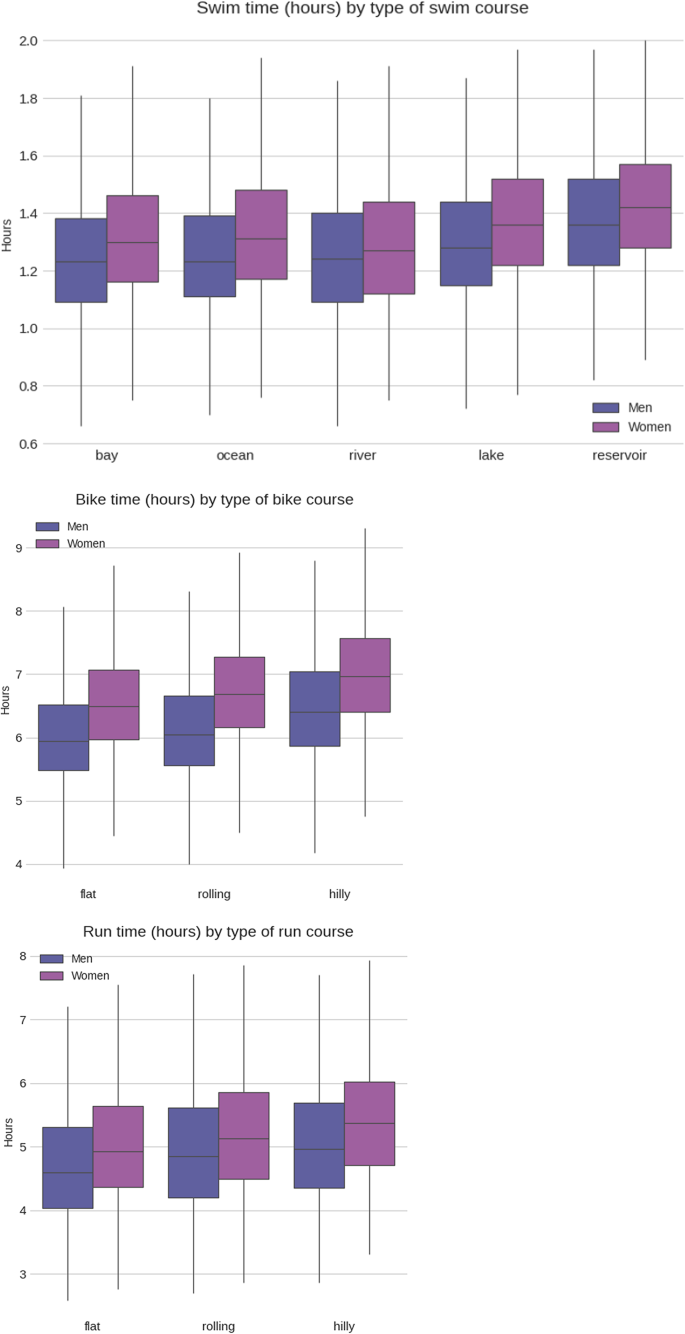
Multi linear regression (MLR) ordinary least squares (OLS) regressor
David Valero
Decision tree and random forest regressors
Article
CAS
PubMed
Google Scholar
XG boost regressor
Understanding the age demographics of world-class IRONMAN triathletes who emerge victorious and stand out as the fastest is crucial for several reasons18. First, it provides valuable information on the optimal age range for peak athletic performance in long-distance triathlons, offering guidance to both aspiring and experienced athletes on when their training efforts may yield the best results. Additionally, such knowledge helps sports scientists, coaches, and trainers tailor training regimens that consider age-specific physiological changes, helping athletes maximize their potential while minimizing the risk of injury. Moreover, recognizing the age groups dominating IRONMAN competitions contributes to a deeper understanding of the sport’s evolving dynamics and may influence the development of age-specific talent pipelines or training programs19,20. In general, investigating the age demographics of top-performing IRONMAN athletes enhances our understanding of the physiological nuances of the sport and has practical implications for optimizing training strategies across different age cohorts.
SHAP values and features importances for the XG boost model
Article
ADS
CAS
PubMed
PubMed Central
Google Scholar
Partial dependence plots (PDP) of the XG boost model
Article
PubMed
MATH
Google Scholar
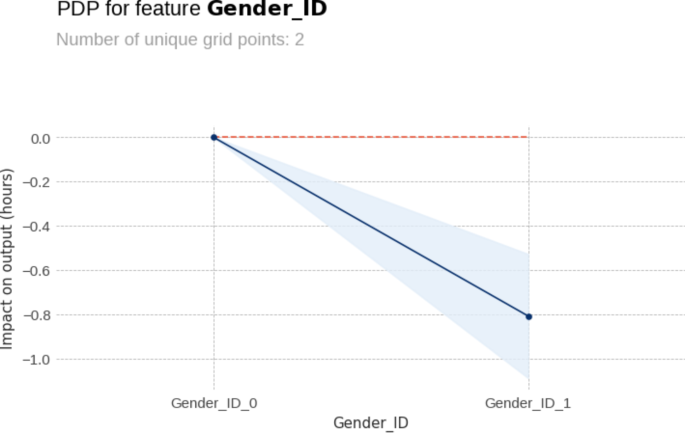
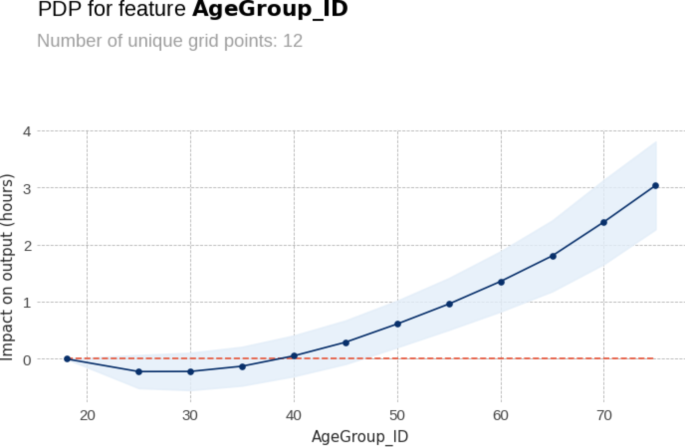
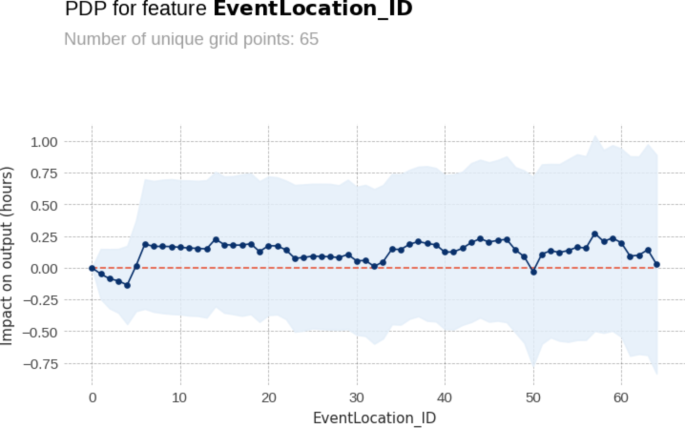
PubMed Google Scholar
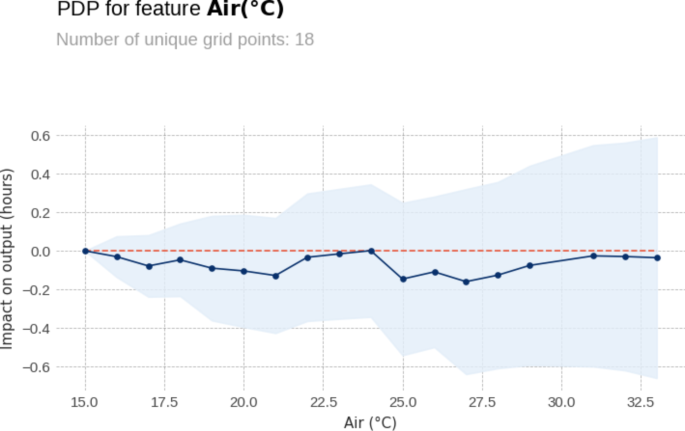
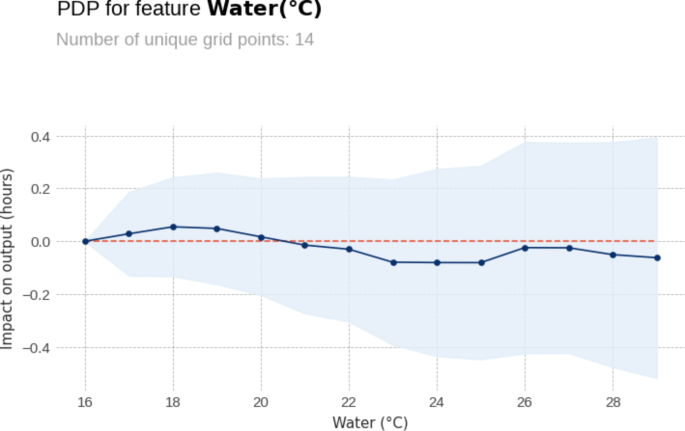
Air and water temperature versus race time—3D interaction charts by model
Researching and identifying the countries from which the fastest non-professional IRONMAN triathletes emerge, along with their age groups, is of significant importance for several reasons. Firstly, such information provides valuable insight into the global distribution of talent in the sport, allowing for a more comprehensive understanding of the geographical patterns of high-performance triathletes outside the professional realm26. This knowledge can be instrumental in the formation of training programs, talent identification strategies, and the allocation of resources within different nations. Second, analyzing the age groups of the fastest non-professional IRONMAN triathletes offers critical data on the optimal stages of life for achieving peak performance in this demanding endurance sport. This information can guide coaches, trainers, and athletes in tailoring training regimens that consider age-related physiological changes and potential peak performance windows27,28. It also helps in the development of age-specific training methodologies to optimize athletic potential at various stages of life. In addition, understanding the demographics of nonprofessional IRONMAN triathletes contributes to a wider promotion of sport and the adoption of a healthy and active lifestyle. Highlighting the diverse age groups and nationalities of successful participants encourages a broader population to participate in triathlons, fostering a sense of inclusivity and inspiration for aspiring athletes.
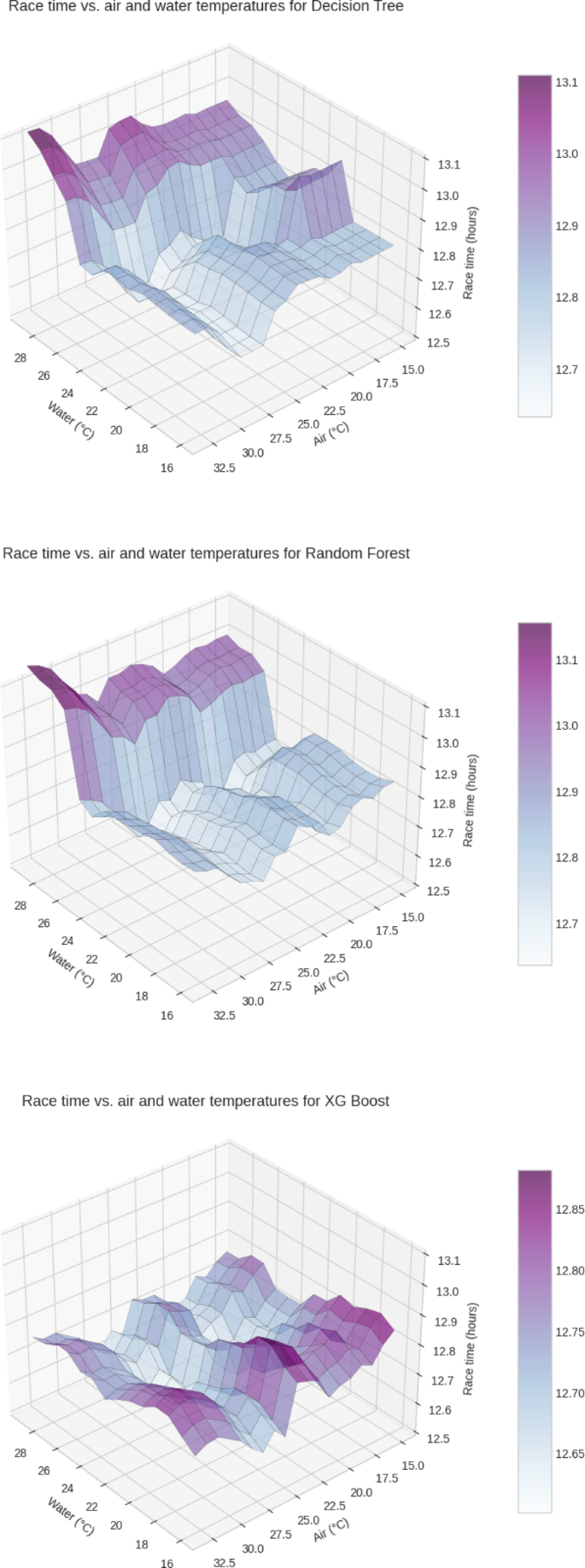
Discussion
PubMed
PubMed Central
MATH
Google Scholar
European athletes were the fastest
Article
MATH
Google Scholar
Article
Google Scholar
Most of the athletes originated from the USA, followed by United Kingdom, Canada, Australia, Germany, France, Spain, Sweden, Brazil, Austria, and Italy for the 10 first countries.
The fastest race courses
You can also search for this author in
PubMed Google Scholar
The aspect of environmental conditions
In summary, researching the countries and age groups of the fastest nonprofessional IRONMAN triathletes is essential for shaping targeted training approaches, fostering global sporting development, and promoting the sport’s inclusivity and accessibility to individuals of all ages and backgrounds26,29. Despite the importance of professional athletes for the representativeness of the countries at the national level, nonprofessional athletes should be studied to amplify the evidence regarding the fastest countries. Therefore, the purpose of this study was to identify the age group of athletes of the fastest countries competing in IRONMAN events between 2002 and 2020. Based upon existing knowledge we hypothesized that the fastest IRONMAN age group triathletes would also originate from the USA.Poczta, J. & Malchrowicz-Mosko, E. Mass triathlon participation as a human need to set the goals and cross the borders. How to understand the triathlete?. Olimpianos J. Olympi. Stud. 8, 9. https://doi.org/10.30937/2526-6314.v4.id114 (2020).
The influence of race course characteristics
Cote, J., Macdonald, D., Baker, J. & Abernethy, B. When, “where” is more important than “when”: Birthplace and birthdate effects on the achievement of sporting expertise. J. Sports Sci. 24(10), 1065–1073. https://doi.org/10.1080/02640410500432490 (2006).
Limitations
A total of 677,320 IRONMAN finishers´ records (544,632 from men and 132,688 from women) from the top 150 countries by number of records, participating in 443 IRONMAN events over 65 different locations between 2002 and 2022 were analyzed.
Conclusion
Data availability
Anyone you share the following link with will be able to read this content:
References
- Article
Google Scholar
Piacentini, M. F., Vleck, V. & Lepers, R. Effect of age on the sex difference in Ironman triathlon performance. Movement Sport Sci. https://doi.org/10.1051/sm/2019030 (2019). - Marilia Santos AndradeArticle
PubMed
Google Scholar - The XGB model is built with 50 estimators, max depth of 9 and learning rate of 0.3, to obtain a R2 score of 0.27 over the 25% held-out test set. Whilst the highest score of the three ML models tested, this is still a low R2 score meaning the model can only explain 27% of the variability in the predicted variable, and that more predictors should be considered, if any predictive expectations are to be had. But we can still use the tools in our model interpretability toolset to look for insights into what the model learnt.Knechtle, B., Villiger, E., Weiss, K. et al. The fastest nonprofessional age group IRONMAN triathletes in the world originate from Europe.
Sci Rep 15, 1028 (2025). https://doi.org/10.1038/s41598-024-84008-9 - Despite the use of a data set of nearly 700,000 IRONMAN triathletes and the large time frame of 20 years, we are not sure whether all races correctly measured their split distances. Furthermore, since thousands of athletes compete in an IRONMAN race, athletes can cycle in packages during the cycling split50, although drafting in cycling in an IRONMAN race is not allowed. Drafting while cycling can considerably improve performance, reduce the cycling split time, and improve the subsequent running split performance51. The biopsychosocial factors and intrinsic and extrinsic motivation that led to elite performance in professional and nonprofessional athletes are different. It is extremely important to differentiate and highlight this in the research problem and justification. This could even be the objective of future research. In another way, by analyzing and comparing the athletic achievements of different countries in these events, researchers can discern patterns, trends, and potential influencing factors that contribute to superior athletic performance52. These findings not only contribute to understanding the competitive dynamics within the IRONMAN community but also have broader implications for sports science, training methodologies, and potentially national-level athletic development strategies27. Further, the study may serve as a foundation for future research, helping athletes, coaches, and sports enthusiasts improve their understanding of the factors that contribute to success in this challenging endurance sport.
- Article
PubMed
Google Scholar
Article
PubMed
Google Scholar - Çetin, A. Triathletes’ motivational dimensions for participation in ironman, and comparison of these factors with their life satisfaction and achievement perceptions. Int. J. Hum. Move. Sports Sci. 7(3), 43–50. https://doi.org/10.13189/saj.2019.070301 (2019).Article
CAS
PubMed
Google Scholar - You can also search for this author in
PubMed Google ScholarBritton, E. & Foley, R. Sensing water: Uncovering health and well-being in the sea and surf. J. Sport Social Issues 45(1), 60–87. https://doi.org/10.1177/0193723520928597 (2021). - Jafarnezhadgero, A., Eskandari, S., Sajedi, H. & Dionisio, V. C. Long-term effects of running exercises on natural grass, artificial turf, and synthetic surfaces on ground reaction force components in individuals with overpronated feet: A randomized controlled trial. Gait Posture 109, 28–33. https://doi.org/10.1016/j.gaitpost.2024.01.016 (2024).Article
MATH
Google Scholar - Ultra Sports Science Foundation, Pierre-Benite, FranceWells, M. S. & Marwood, S. Effects of power variation on cycle performance during simulated hilly time-trials. Eur. J. Sport Sci. 16(8), 912–918. https://doi.org/10.1080/17461391.2016.1156162 (2016).
- Article
MATH
Google Scholar
Springer Nature remains neutral with regard to jurisdictional claims in published maps and institutional affiliations. - The first two ML models, attempted over several configurations, obtained best values of MAE of 1.27 and 1.26 h, respectively. They both obtain a best R2 score of 0.25. This is an improvement over the linear MLR model, but still a low R2 score (weak effect) by any measure.Article
PubMed
PubMed Central
Google Scholar - Carpenter, J., Frank, R. & Huet-Vaughn, E. Gender differences in interpersonal and intrapersonal competitive behavior. J. Behav. Exp. Econ. 77, 170–176. https://doi.org/10.1016/j.socec.2018.10.003 (2018).Article
PubMed
Google Scholar - Article
MATH
Google Scholar
You can also search for this author in
PubMed Google Scholar - Poczta, J. & Malchrowicz-Mośko, E. From half-marathon to triathlon: sports participation as a reflection of post-materialism processes in polish society. Olimpianos J. Olympic Stud. 5, 141–151. https://doi.org/10.30937/2526-6314.v5.id128 (2021).You can also search for this author in
PubMed Google Scholar - Correspondence to
Beat Knechtle.Article
Google Scholar - Puccinelli, P. et al. Origin and age group of the fastest amateur triathletes competing in ‘Ironman Hawaii’ between 2003 and 2019. Sports Med. Health Sci. https://doi.org/10.1016/j.smhs.2023.07.008 (2023).Article
Google Scholar - Race data from all official IRONMAN races was downloaded from the official IRONMAN website (www.ironman.com) using a Python script. The sex, age group, country of origin of the athletes, location and year of the event, and times for swimming, running, cycling, overall race times, and transition were therefore obtained. The data was inspected for consistency, removing duplicate and/or incomplete records. Similarly, the event location variable was harmonized to map generic values to their actual location. Race times were re-calculated to hours and are expressed with two decimal digits. Additional location specific data was added and merged with the race data, including average air and water temperatures in °Celsius (in integer form, that is, without any decimals), and the type of race course in each split discipline as categorical variables, including the values of rolling, hilly, and flat for the bike and run race courses, and lake, ocean, river, bay, reservoir for the different swim courses. The race records were separately aggregated by event location and by country, to produce two large ranking tables sorted by number of race records (i.e. participation). In doing so, we identified up to 228 different countries in the original data sample, many of them with 1, 2 or 3 records and hence with no statistical interest. We then decided to limit the analysis to the top 150 countries by number of records, which account for 99.94% of the full sample and includes countries with at least 13 race records, while eliminating noise, which is in turn good for computing, interpretation, and overall interest. After the pre-processing and merging of the data, the final dataset consisted of a total of 677,320 finishers´ records (i.e. 544,632 from men and 132,688 from women) from the top 150 countries by number of records, participating in 443 events over 65 different locations between 2002 and 2022.Regarding water temperature, it is well known that water temperature has a direct effect on swimming performance43. However, little is described in the scientific literature. A very recent study reported that swimming in a river had in female triathletes a greater effect on overall race time than cycling or running40. Whit the present findings, triathletes can also better select an IRONMAN race regarding the swim course temperatures and the influence on overall race time.
- Article
Google Scholar
This study was approved by the Institutional Review Board of Kanton St. Gallen, Switzerland, with a waiver of the requirement for informed consent of the participants as the study involved the analysis of publicly available data (EKSG 01/06/2010). The study was conducted in accordance with recognized ethical standards according to the Declaration of Helsinki adopted in 1964 and revised in 2013. - You can also search for this author in
PubMed Google ScholarSorry, a shareable link is not currently available for this article. - Article
PubMed
PubMed Central
Google Scholar
Beat Knechtle, Elias Villiger, Katja Weiss & Thomas Rosemann - Berri, D. J., Deutscher, C. & Galletti, A. Born in the USA: National origin effects on time allocation in US and Spanish professional basketball. Natl. Inst. Econ. Rev. 232, R41–R50. https://doi.org/10.1177/002795011523200105 (2015).Georgiades, E., Klissouras, V., Baulch, J., Wang, G. & Pitsiladis, Y. Why nature prevails over nurture in the making of the elite athlete. BMC Genom. 18(8), 835. https://doi.org/10.1186/s12864-017-4190-8 (2017).
- Article
Google Scholar
Kasović, M., Škrinjarić, B. & Štefan, L. Macro and meso indicators of success pertaining to European countries in elite triathlon. Int. Sci. J. Kinesiol. 13(2), 49–56 (2020). - Usually, these approaches associate the performance of these countries in the most important championships worldwide, to verify those achieving outstanding performance2. Even though most of the studies are developed in the context of elite sports, the popularity of sports among countries also presents important indicators regarding the popularity of sports among nonprofessional athletes9, and the importance of the sport among residents. For example, for endurance sports, previous literature has shown that running is part of the culture of East African countries, also influencing the practice among nonprofessional athletes10,11.Thuany, M. et al. A machine learning approach to finding the fastest race course for professional athletes competing in Ironman® 703 races between 2004 and 2020. Int. J. Environ. Res. Public Health 20(4), 3619. https://doi.org/10.3390/ijerph20043619 (2023).
- Wattie, N., Schorer, J. & Baker, J. Seeing the forest but not the trees: Heterogeneity in community size effects in Canadian ice hockey players. J. Sports Sci. 36(4), 436–444. https://doi.org/10.1080/02640414.2017.1313444 (2018).Received:
- Jürgens, D. et al. An analysis of participation and performance by nationality at “Ironman Switzerland” from 1995 to 2011. J. Sci. Cycl. 1(2), 10–20 (2012).Article
Google Scholar
Google Scholar
For the top countries by the number of age group records, Germany, Austria, Denmark, Belgium, Switzerland, Norway, Czechia, Estonia, and Slovenia were the fastest. These results are similar to those found by professional IRONMAN 70.3 triathletes21. The emergence of Germany, Austria, Denmark, Belgium, Switzerland, Norway, Czechia, Estonia, and Slovenia within the IRONMAN context may be attributed to a combination of unique factors such as geography, climate, and culture34,35. Many participants are drawn to IRONMAN triathlons as a means to improve their physical capabilities, seeking personal growth and the satisfaction of overcoming a multifaceted challenge36. The competitive aspect also plays a role, with participants aiming to test their limits, set personal records, and, in some cases, compete in organized events. This broader inclusivity, coupled with the diverse motivations behind participation, underscores the evolving and accessible nature of triathlons in contemporary society.- Article
PubMed
MATH
Google Scholar
Asgari, B. & Khorshidi, R. The effect of hosting on performance of host countries in summer and winter Olympic Games. Eur. J. Sports Exercise Sci. 2(2), 1–6 (2013). - Rossing, N. N., Stentoft, D., Flattum, A., Côté, J. & Karbing, D. S. Influence of population size, density, and proximity to talent clubs on the likelihood of becoming elite youth athlete. Scand. J. Med. Sci. Sports 28(3), 1304–1313. https://doi.org/10.1111/sms.13009 (2018).Pryor, J. L. et al. Pacing strategy of a full ironman overall female winner on a course with major elevation changes. J. Strength Cond. Res. 32(11), 3080–3087. https://doi.org/10.1519/JSC.0000000000002807 (2018).
- Article
Google Scholar
Knechtle, B., Rosemann, T. & Nikolaidis, P. The role of nationality in ultra-endurance sports: The paradigm of cross-country skiing and long-distance running. Int. J. Environ. Res. Public Health https://doi.org/10.3390/ijerph17072543 (2020). - Medbase St. Gallen Am Vadianplatz, Vadianstrasse 26, 9001, St. Gallen, SwitzerlandMölenberg, F. J. M., de Waart, F., Burdorf, A. & van Lenthe, F. J. Hosting elite sport events to target recreational sport participation: An interrupted time series analysis. Int. J. Sport Policy Polit. 12(4), 531–543. https://doi.org/10.1080/19406940.2020.1839530 (2020).
- Article
MATH
Google Scholar
Olcina, G., Crespo, C., Timón, R., Mjaanes, J. M. & Calleja-González, J. Core temperature response during the marathon portion of the ironman world championship (Kona-Hawaii). Front. Physiol. 3(10), 1469. https://doi.org/10.3389/fphys.2019.01469 (2019).
Google Scholar
A last important finding was the IRONMAN race course characteristic had a considerable influence on overall race time where slower race times were achieved with hilly cycling and running courses whilst flat surfaces, rolling cycling and ocean swimming were leading to faster race times. It is well known that the running surface has an influence on running performance especially regarding running-related injuries44,45. Also in cycling, race course characteristics show an influence on race performance46 where especially ascents slow cyclists down47. Changes in elevation during an IRONMAN race have also an influence on pacing during the cycling split48 where downhill segments show an important influence49. The present findings may help IRONMAN triathletes to select an appropriate IRONMAN race for their personal achievements.- Nikolaidis, P. T. et al. Predicting overall performance in Ironman 70.3 age group triathletes through split disciplines. Sci. Rep. 13(1), 11492. https://doi.org/10.1038/s41598-023-38181-y (2023).Article
PubMed
Google Scholar - Nikolaidis, P. T., Kach, I., Rosemann, T. & Knechtle, B. The role of nationality on the pacing of ironman triathletes. Asian J. Sports Med. 8(4), e57130. https://doi.org/10.5812/asjsm.57130 (2017).Article
PubMed
PubMed Central
Google Scholar - Article
PubMed
PubMed Central
Google Scholar
Article
PubMed
Google Scholar - Article
CAS
PubMed
Google Scholar
Sousa, C. V., Nikolaidis, P. T. & Knechtle, B. Ultra-triathlon-Pacing, performance trends, the role of nationality, and sex differences in finishers and non-finishers. Scand. J. Med. Sci. Sports 30(3), 556–563. https://doi.org/10.1111/sms.13598 (2020). - Download referencesBouscaren, N., Millet, G. Y. & Racinais, S. Heat stress challenges in marathon versus ultra-endurance running. Front Sports Act. Living 13(1), 59. https://doi.org/10.3389/fspor.2019.00059 (2019).
- Comparative studies have been recurrent in sports science1,2. Generally, these studies are used to verify the performance of countries in different sports disciplines, including the world championships and Olympic Games2. Previous literature has indicated that some countries represent a higher likelihood of being successful in specific sports disciplines, such as basketball in the United States (US)3, Kenya and Ethiopia in long-distance running events4, and Canada in hockey events5. These higher probabilities are related to several factors, including social, economic, cultural, and environmental characteristics6,7,8.Mitchell, C., McDonnell, S., Oganezova, K., Mockler, D. & Fleming, N. The effect of surface compliance on overground running biomechanics. A systematic review and meta-analysis. Sports Biomech. https://doi.org/10.1080/14763141.2023.2236058 (2023).
- PDP charts for country of origin of the athletes.This study was approved by the Institutional Review Board of Kanton St. Gallen, Switzerland, with a waiver of the requirement for informed consent of the participants as the study involved the analysis of publicly available data (EKSG 01/06/2010). The study was conducted following recognized ethical standards according to the Declaration of Helsinki adopted in 1964 and revised in 2013.
- Article
PubMed
PubMed Central
Google Scholar
Phillips, K. E. & Hopkins, W. G. Determinants of cycling performance: A review of the dimensions and features regulating performance in elite cycling competitions. Sports Med. Open 6(1), 23. https://doi.org/10.1186/s40798-020-00252-z (2020). - Article
PubMed
PubMed Central
Google Scholar
The authors declare no competing interests. - Distribution of age groups by sex.World Athletics. What it takes to become a Kenyan distance champion: World Athletics, 2022 [cited 2022 20 August]. Available from: https://worldathletics.org/be-active/performance/kenyan-distance-running-reasons-success
- The SHAP aggregated values chart in Fig. 3 shows how each predicting variable influences the model output, with the factors rated as more important at the top. The country of origin is the most important predictor. The variable age group comes up as the second most important feature but the one that best separates data points. Red dots (i.e. high or older age groups) contribute positively to the race time, whilst shades of purples and blues increasingly move to the left, deducting from the race times. Sex and the location of the event are the next most important predictors. Further down but with clear separation of red and blue data points, hilly running and cycling race courses add to race time (i.e. slower race times), whilst flat surfaces, rolling cycling and ocean swimming deduct from it (i.e. faster race times).PDP charts for the location where the race was held.
- Knechtle, B. et al. Performance and pacing of professional IRONMAN triathletes: The fastest IRONMAN World Championship ever-IRONMAN Hawaii 2022. Sci. Rep. 13(1), 15708. https://doi.org/10.1038/s41598-023-42800-z (2023).A further important finding was that IRONMAN Hawaii was the fastest race course, followed by European race courses such as IRONMAN Vitoria-Gasteiz and IRONMAN Hamburg. The finding that IRONMAN Hawaii is the fastest race course for age group athletes is explained by the fact that IRONMAN Hawaii is the World Championship for IRONMAN triathletes37 where only the best triathletes can compete after qualification for the IRONMAN World Championship38.
- Forrest, D., McHale, I. G., Sanz, I. & Tena, J. D. An analysis of country medal shares in individual sports at the Olympics. Eur. Sport Manag. Quart. 17(2), 117–131. https://doi.org/10.1080/16184742.2016.1248463 (2017).Article
Google Scholar - Collins, M. et al. The ACE gene and endurance performance during the South African Ironman Triathlons. Med. Sci. Sports Exerc. 36(8), 1314–1320. https://doi.org/10.1249/01.mss.0000135779.41475.42 (2004).Allebosch, G., Van den Bossche, S., Veelaert, P. & Philips, W. Camera-based system for drafting detection while cycling. Sensors 20(5), 1241 (2020).
- PDP charts for age group.Article
ADS
CAS
PubMed
PubMed Central
Google Scholar - Hancock, D. J., Coutinho, P., Côté, J. & Mesquita, I. Influences of population size and density on birthplace effects. J. Sports Sci. 36(1), 33–38. https://doi.org/10.1080/02640414.2016.1276614 (2018).Haugen, T. A. et al. Peak age and performance progression in world-class track-and-field athletes. Int. J. Sports Physiol. Perform. 13(9), 1122–1129 (2018).
- Beat Knechtle
Google Scholar - Normality of the race time distributions by sex was checked by visual inspection of race time histograms and calculation of Gaussian overlapping curves. The statistical values of the overall race times (i.e. mean, std, max, and min) were calculated for each of the 65 locations and 150 countries and are displayed in the large ranking tables. The event location ranking table includes specific race course data, including the average air and water temperatures, and the type of race course. An analysis of the race performance by type of race course was done and the results are shown in the form of boxplot charts and accompanying 2-way ANOVA tests that suggest the statistical significance of the different types of swim, bike, and run race courses. The significance level was set at 0.05 in all cases. Several predictive modelling algorithms were tested, including a Multivariate Linear Regressor (MLR) and three Machine Learning (ML) Regressors, a Decision Tree, a Random Forest and a XG Boost Regressor. The predicted variable (i.e. target) was the overall race time (in hours) whilst a total of 17 predictors (i.e. features or factors) were used, including a number of categorical variables that had to be encoded before they could be used with the models. The variable sex (men/women) is encoded as 0 = women and 1 = men. The age group variable is encoded as an integer, representing 5-year groups, with group 18 representing less than 20 years, group 20 from 20 to 24, group 25 from 25 to 29, etc. until group 75 which includes any triathletes older than 75 years of age. The country and event location variables are encoded based on their position in the ranking lists, sorted by participation, and starting with zero. The event location average air and water temperature variables, of numerical type, are used as they are reported on the website of the organizers. The three categorical variables (i.e. swim, bike and run) are converted into dummy variables (binary flags) indicating the presence with 1 and absence with 0, becoming a set of 11 binary variables. Given the large size of the dataset, a hold-out test strategy was used, with 25% of the dataset reserved for model evaluation: 507,076 race records were used for model training, and 169,026 for model evaluation. For each of these models, the Mean Absolute Error (MAE) and the coefficient of determination (R2) were calculated. After training, evaluating, and comparing the three models, XG Boost emerged as the best performer and we present only the results from XG Boost. Model interpretability tools like SHAP or PDP libraries were used to further understand how, according to the models, each predictor influenced the race finish time. All data processing and analysis were performed using Python (www.python.org/) and a Google Colab notebook (https://colab.research.google.com/).Open Access This article is licensed under a Creative Commons Attribution-NonCommercial-NoDerivatives 4.0 International License, which permits any non-commercial use, sharing, distribution and reproduction in any medium or format, as long as you give appropriate credit to the original author(s) and the source, provide a link to the Creative Commons licence, and indicate if you modified the licensed material. You do not have permission under this licence to share adapted material derived from this article or parts of it. The images or other third party material in this article are included in the article’s Creative Commons licence, unless indicated otherwise in a credit line to the material. If material is not included in the article’s Creative Commons licence and your intended use is not permitted by statutory regulation or exceeds the permitted use, you will need to obtain permission directly from the copyright holder. To view a copy of this licence, visit http://creativecommons.org/licenses/by-nc-nd/4.0/.
- PDP charts for sex.Thuany, M., Viljoen, C., Gomes, T. N., Knechtle, B. & Scheer, V. Mental health in ultra-endurance runners: A systematic review. Sports Med. 53(10), 1891–1904. https://doi.org/10.1007/s40279-023-01890-5 (2023).
- Stiefel, M., Rüst, C. A., Rosemann, T. & Knechtle, B. A comparison of participation and performance in age-group finishers competing in and qualifying for Ironman Hawaii. Int. J. Gen. Med. 6, 67–77. https://doi.org/10.2147/IJGM.S40202 (2013).Figure 2 shows the difference between women and men regarding the race course characteristics for swimming with swimming in a bay, in the ocean, a river, a lake or a reservoir where men were always faster than women. Also for cycling and running (i.e. flat, rolling, or hilly), men were always faster than women.
Despite the evidence that indicates higher participation and performance indicators among professional athletes from the USA16, these results present important limitations. The most important aspect refers to the different methodological approaches used among different studies, which impair the generalization of the findings; also, the time frame should be considered, in association with the greater interest in studying professional athletes21,22,23. Understanding the nuanced interplay of biopsychosocial factors and the intricate balance between intrinsic and extrinsic motivation is crucial when delving into the realms of elite performance in both professional and nonprofessional athletes24. The assertion that these factors differ significantly between the two categories raises pertinent questions about the dynamics that influence athletic peak achievements in diverse contexts25. In professional athletes, factors such as genetic predispositions, access to high-level coaching, and optimal training environments may take precedence, while nonprofessional athletes may be driven by personal goals, societal expectations, and the pursuit of holistic well-being.
Author information
Authors and Affiliations
Contributions
Corresponding author
Ethics declarations
Ethics approval
Zhao, J., Wu, Y. & Zhang, J. A study of triathletes’ race strategies in different competition environments. Heliyon 10(8), e29454. https://doi.org/10.1016/j.heliyon.2024.e29454 (2024).
Competing interests
Hausswirth, C. et al. Effect of two drafting modalities in cycling on running performance. Med. Sci. Sports Exerc. 33(3), 485–492. https://doi.org/10.1097/00005768-200103000-00023 (2001).
Additional information
Publisher’s note
For this study, we have included official results and split times from the official IRONMAN® website (www.ironman.com) The data sets used and/or analyzed during the current study are available from the corresponding author upon reasonable request.
Rights and permissions
Download citation
About this article
Cite this article
CAS
MATH
Google Scholar
Article
Google Scholar
- MoveAgeLab, Physical Education Sport Center of Federal, University of Espirito Santo, Vitoria, ES, Brazil
- It is well known that elite athletes of specific ethnicities and/or nationalities dominate certain sports disciplines (e.g., East Africans in marathon running). However, we do not know the nationalities of the fastest non-professional IRONMAN triathletes. Therefore, this study intended to identify the fastest athletes by country of origin competing in IRONMAN triathlon events, focusing on non-professional age group triathletes. Data from all IRONMAN age group athletes competing worldwide between 2002 and 2022 in all official IRONMAN races were collected. Sex, age group, country of origin of the athletes, location and year of the event, split times, overall race times, and transition times were obtained. Additionally, the dataset was augmented with specific data (i.e. event characteristics such as temperatures for water and air and course characteristics for all three split disciplines) related to the different race locations. We limited the analysis to the top 150 countries by participation (i.e. countries with at least 13 successful finishers records in the sample). A total of 677,320 records of IRONMAN age group triathletes originating from 150 different countries and participating in 443 races over 65 different locations were analyzed. European countries such as Germany, Austria, Denmark, Belgium, Switzerland, Norway, Czechia, Estonia, and Slovenia have the fastest IRONMAN age group athletes. IRONMAN Hawaii, IRONMAN Vitoria-Gasteiz and IRONMAN Hamburg are the fastest races. Hilly running and cycling race courses led to slower race times, while flat surfaces, rolling cycling and ocean swimming led to faster race times. Optimal water temperatures were found at 23–25 °C and optimal air temperature ranged between 19–21 and 25–28 °C. The fastest IRONMAN age group triathletes from European countries such as Germany, Austria, Denmark, Belgium, Switzerland, Norway, Czechia, Estonia, and Slovenia. With the presented results for optimal air and water temperatures and description of the optimal cycling and running course characteristics, IRONMAN age group athletes might be able to select an IRONMAN race with the best conditions in order to achieve a fast IRONMAN race time.
- Rüst, C. A. et al. Nation related participation and performance trends in ‘Norseman Xtreme Triathlon’ from 2006 to 2014. SpringerPlus 4(1), 469. https://doi.org/10.1186/s40064-015-1255-5 (2015).
- You can also search for this author in
PubMed Google Scholar
Keywords
Sports
McCutcheon boys volleyball shows growth in 2025 season
LAFAYETTE ― McCutcheon boys volleyball coach Keith Crisler saw his players meld together after two years of learning the sport together. Boys who picked up the sport for the first time two seasons ago became a formidable group that learned to pass, digs and score points together as a unit. McCutcheon was swept in the […]
LAFAYETTE ― McCutcheon boys volleyball coach Keith Crisler saw his players meld together after two years of learning the sport together.
Boys who picked up the sport for the first time two seasons ago became a formidable group that learned to pass, digs and score points together as a unit.
McCutcheon was swept in the first IHSAA sectional boys title title on Saturday afternoon to Zionsville 25-19, 25-14, 25-18, but the program summitted after going 11-20 in 2023 and 6-18 in 2024.
For Crisler, finishing with a 15-10 record in 2025 was a breakthrough for his Mavericks.
“One word I would say is growth,” Crisler said. “Growth as individuals, as athletes and as a program in the sport. Boys volleyball and men’s volleyball in Indiana has (some time) to grow, but I feel like we’ve had a successful season because we took that pioneering step to learn something new and that’s not an easy thing to do.”
The number of boys volleyball teams expanded from 35 in 2022 to the 133 competing in the IHSAA playoffs this spring.
As the competition grew, so did McCutcheon.
“I don’t think anyone should leave this season with their head down and their shoulders slumped,” Crisler said. “They are pioneer men and left their mark in their first official year in Indiana.”
The growth of McCutcheon volleyball was headed by graduating starters senior libero Khelan Patel, middle blocker Jayden Heygood, setter Kieraan Jordan, outside hitter Josh Madsen and outside hitter Malachi Kenner.
Patel, Heygood, Jordan, Madsen and Kenner were the “founding fathers of McCutcheon boys volleyball,” per Crisler.
“They are the true pioneers,” Crisler added. “A lot of what we did this season is because of them. With experiences they had and how they led the younger boys in our program, they should probably have a statue or something like that.”
Patel was a consistent libero who attacked and placed shot receives in playable directions for his offense.
“It just shows the effort and drive we had for the game,” Patel said. “I know all of us who have been playing, we go play during the offseason because of how much we love the sport. We really took it upon ourselves to grow the game, build the program and build what we had within our community at McCutcheon volleyball.”
Jordan distributed the ball as a setter but could also provide an extra body at the net to make blocks or earn kills and points for his team.
“It’s truly something special to be there during the first year and build this thing from the ground up when it wasn’t a fully sanctioned sport,” Jordan said. “It’s just awesome to see it blossom into this and see it expand like football and baseball.”
Jordan and Patel saw the culture grow at McCutcheon through their activity, setting an example for future players to come.
“It shows how much we’ve grown from March 10 and the first day of the season to now,” Jordan said. “We’ve been really focused and bought into the program and this was our goal, to make it to the championship. It showed there was so much focus put into this team.”
Ethan Hanson is the sports reporter for the Journal & Courier in Lafayette. He can be reached at ehanson@jconline.com, on Twitter at EthanAHanson and Instagram at ethan_a_hanson.
Sports
No phones, greater success for McCutcheon boys volleyball in 2025
WEST LAFAYETTE ― A clear plastic box sat at the base of black backpacks behind the McCutcheon bleachers before the IHSAA boys volleyball sectional championship against Zionsville. It reads in red and yellow ink ‘Phone Box.’ It’s part of the rules established by coach Keith Crisler. Players are required to turn their phones off, which […]
WEST LAFAYETTE ― A clear plastic box sat at the base of black backpacks behind the McCutcheon bleachers before the IHSAA boys volleyball sectional championship against Zionsville.
It reads in red and yellow ink ‘Phone Box.’
It’s part of the rules established by coach Keith Crisler.
Players are required to turn their phones off, which are collected by team managers and assistant coaches.
His philosophy: the less time spent on phones means more time to communicate with each other in person.
“I want them to be bored,” Crisler said. “They have too many distractions as it is during this day and age with technology and whatnot. If I take away their phones, I take away their distraction. I force them to be with each other and not be distracted by the ‘face snaps’ and ‘insta-webs.'”
Senior setter Kieraan Jordan believes Crisler’s policy translated to the program’s first winning season in history, finishing 15-10 this spring after going 6-18 in 2024.
“It really kept us together on the bus and not really separated,” Jordan said. “Phones are a big distractor. When you can get each other off that and talk to each other, then you can learn about people and you become more attached to them and it creates more growth.”
The only downside to the policy, at least for McCutcheon senior outside hitter Jayden Heygood, was not being able to capture moments digitally.
“I would’ve liked to record those moments so I get to rewatch it,” Heygood said.
While the Phone Box at McCutcheon carried a mix of opinions, the results spoke for themselves.
McCutcheon made its first IHSAA sectional title in history, losing to a powerful Zionsville team. All six players on the court talked and yelled, shouting ball placements, positions and communicating plays in the seconds where rallies occurred.
“It was tough at first, but I honestly don’t mind it,” Patel said. “It gives us good team bonding so on away games, we put our phones on the bus and we get them back for 20 minutes. It was at first kind of annoying to not have our phones, but after a while, it was nice to talk to the guys on the team and it was really good bonding.”
With this method, Crisler took boredom and turned it into a learning lesson for an entire season.
“In that boredom they bonded, they make things up and they get a chance to be kids,” Crisler said. “That’s what I want out there and that changed the team as a whole.”
Ethan Hanson is the sports reporter for the Journal & Courier in Lafayette. He can be reached at ehanson@jconline.com, on Twitter at EthanAHanson and Instagram at ethan_a_hanson.
Sports
Charlize Tungol – The Daily Aztec
Four years ago, landing in San Diego was the last thing I would have imagined doing before graduating high school. At the time, I had committed to Emerson College for journalism. My cousin just graduated from there, and she just landed a job at NBC in New York. Growing up, all I […]

Four years ago, landing in San Diego was the last thing I would have imagined doing before graduating high school. At the time, I had committed to Emerson College for journalism. My cousin just graduated from there, and she just landed a job at NBC in New York. Growing up, all I wanted to do was be her; to me, it seemed like I was getting close.
Next thing you know, I fell in love with Boston and the whole walkable big city aspect. I got into music journalism, and I couldn’t stop spending my money on general admission concert tickets in the area. It was such a fitting city for the arts, and at the time, it felt like home. Come July 2022, I had to make the last-minute decision to transfer back home and attend community college due to the school’s high costs.
My hometown, San Jose, California, became my home once again for my sophomore year, which was surprisingly refreshing instead of feeling all too familiar. I was on the women’s soccer team, which felt really nice since I hadn’t touched a ball since my last high school season. I got a job with the school’s marketing department and kicked off the first social media campaign it ever had. It felt good to feel like I was giving back to my community instead of finding my way around a new city on the other side of the country.
Then came graduation, and I had to ask myself – Where should I go next? Where is the right place to start over?
I looked at San Diego State University, since it was a good school that:
1.) Was still in California
2.) Affordable
3.) Had a journalism program that felt right for me.
As soon as I got accepted, I knew that was where I was going to continue my journey.
Once I moved to San Diego, I felt like I had a lot of catching up to do. I spent the last two years figuring it out, and now I really had to pick it up and start to establish myself and what I want my career to look like. I knew I wanted to be an entertainment journalist, but didn’t really have a particular niche that I felt fully confident in.
I took a Sports Journalism class on a whim. I thought it would satisfy my desire to stay tied to sports while also allowing me to see where my writing skills could take me. I wrote about sports that I had never reported on before, from college basketball to professional women’s volleyball. Covering the inaugural season of the San Diego Mojo led me to opportunities I never thought would come across my lap – working in PR, writing a feature for the San Diego Union-Tribune, getting to meet Joe Musgrove and Jordan Love – the list goes on.
Looking over NIL and partnership contracts then got me interested in law. I joined the Pre-Law Society with the help of my intramural soccer teammate and gained the confidence to view law as a way to contribute to the field of sports with my desire to build player relationships. Not knowing what I was getting myself into, I ran for executive board. I was nearing my senior year, and I thought I could use some university leadership experience to add to my belt. And to my surprise, I ended up winning the race for secretary.
The same thing applied to the Daily Aztec. It made the most sense to go to school for journalism and take an editor role for the school newspaper. Being selected as Social Media Editor for my senior year, all while balancing other prior commitments, felt overwhelming to say the least. Senior year is usually supposed to be more laid back and relaxing, and it seemed like I combined the workload of the last three years into one.
Nonetheless, I wouldn’t have traded it for the world. I take every experience and opportunity of mine with so much gratitude. And I believe that I wouldn’t have been offered it if I couldn’t handle it all.
It was that dedication and perseverance that led me to win the Outstanding Media Studies Student award for the 2024-2025 year. As a transfer student, I always thought my contribution to the school and its journalism program would be minimal. With this award I have realized that no matter how long I’m a part of a program and where on the map it is, I’m always going to push myself and make a difference in the communities that I am a part of.
But, as always, I would like to thank my parents and my family. I’ve never met a more supportive group of people who keep me grounded and motivated to keep moving forward. Through the ups and downs and the struggles with financial aid and navigating the first-generation student experience, I truly couldn’t have done it without them. It is my hope that I have inspired my little brothers and my younger cousins to follow in my footsteps and take advantage of higher education and the freedom of choice that our parents and grandparents didn’t have when moving to the United States.
I would also like to thank every single one of my professors for granting me the opportunity to learn and grow from their curricula and feedback, and passing along their years of expertise onto me. Thank you to all of my mentors for helping a lost, young adult find herself, her voice, and her passions in a short span of four years. Thank you to all of my peers for cheering me on and offering your helping hands in a time when we were all figuring it out together.
And with that, I leave SDSU with a heart full of gratitude, hope, and love. Thank you for the most amazing last two years and for helping me become the person I am today. Go Aztecs!
Sports
USA Volleyball announces U.S. Girls U19 National team roster
USA Volleyball has selected 19 athletes to compete for a spot on the 12-player roster for the 2025 FIVB Girls U19 World Championships. That event will be held July 2-13 in both Croatia and Serbia, where USA will be in Pool C with Turkey, Bulgaria, Poland, Peru and Spain. The 19 players selected on the […]
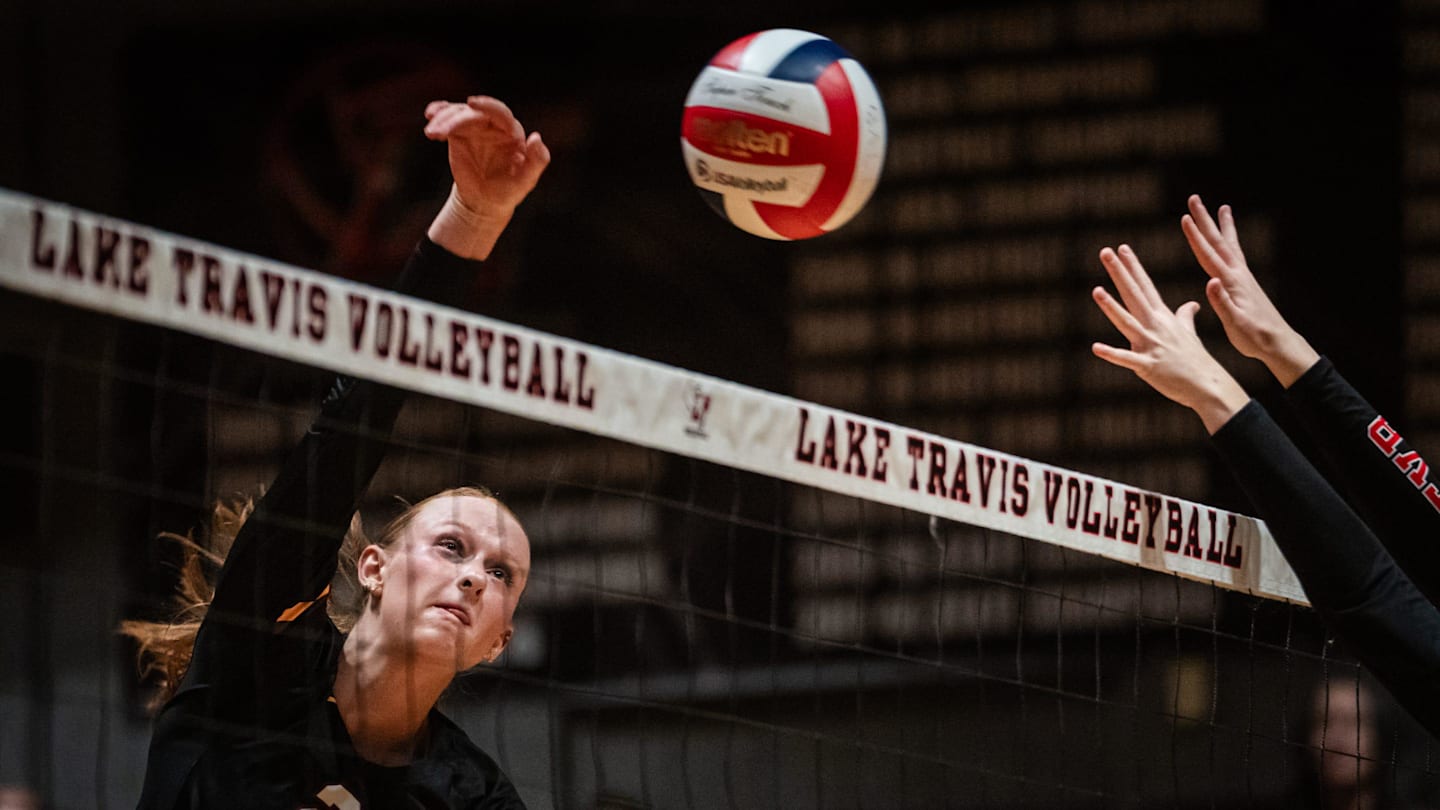
USA Volleyball has selected 19 athletes to compete for a spot on the 12-player roster for the 2025 FIVB Girls U19 World Championships.
That event will be held July 2-13 in both Croatia and Serbia, where USA will be in Pool C with Turkey, Bulgaria, Poland, Peru and Spain.
The 19 players selected on the initial list will train June 1-7 in Colorado Springs, Colorado. At the end of that week, 12 players will be selected for the competition roster.
In preparation for the FVIB event, the USA roster will compete June 26-30 in the Netherlands.
“This year’s roster includes an ideal mix of returning athletes alongside some exciting new faces making their international debut,” Head Coach Keegan Cook said. “It’s a physical group with unique positional flexibility, both of which will help us compete against the best teams in the world.”
The U.S. Girls U19 National Team is the reigning world champion, having won the event in 2023.
The initial roster includes 4 from Texas, 3 from Florida and 2 from North Carolina and Indiana.
The Texan group includes four all-state players from 2024: Henley Anderson from Dripping Springs, Suli Davis from Colleyville Heritage, Jordan Taylor from Houston Langham Creek and Macaria Spears from Plano Prestonwood Christian Academy.
Spears is a two-time Gatorade Player of the Year from Texas and will play at Texas. Taylor will head to Minnesota after being the District 16-6A Outstanding Blocker of the Year three times. Davis, the 2025 PrepVolleyball Player of the Year, is at BYU.
Anderson is a junior in high school and has committed to Texas.
From the Sunshine State, Lily Hayes, Kelly Kinney and Izzy Mogridge made the initial list.
Hayes has signed to play at Florida after competing at Berkeley Prep and is from Tampa. Kinney, who play at The Kings Academy and hails from West Palm Beach, will join Taylor at Minnesota.
Mogridge, a high school teammate of Hayes at Berkeley Prep, is from Lutz. She was the Class 3A player of the year and signed with Tennessee.
From North Carolina, Genevieve Harris and Gabrielle Nichols made the initial roster.
Harris, from Cardinal Gibbons, is a junior who has committed to Texas. Nichols played the last two years at Ronald Reagan High School in Pfafftown. The Penn State signee started her high school in New York but moved when her father, Demetris Nichols, was hired as an assistant coach for the Wake Forest men’s basketball team.
From the Hoosier state is Logan Bell and Charlotte Vinson.
Bell, from Beech Grove, was the Gatorade Player of the Year in Indiana and led Roncalli High School to a 35-0 record and the Class 3A state championship in 2024. She has signed to play at Kansas.
Vinson, who attended Yorktown, was the 2024 Indiana Ms. Volleyball. She is staying in-state and will play at Indiana.
Other players selected:
Anderson, Bell, Davis, Harris, Hoppe, Kinney, Warren and Wiest were on the 2024 U19 national team. Spears, Kinney and Davis were also on the 2023 U19 team.
Sports
Never too old to learn the ABCs of swimming and water safety – The Vacaville Reporter
Soaking wet and smiling as they stood poolside at the Walter Graham Aquatic Center in Vacaville, mother and daughter Maria Alvarez and Sue Ortiz shared more than just their participation in the Adult Learn to Swim program. They each had clear memories of fear they felt as children when they entered the water for the […]
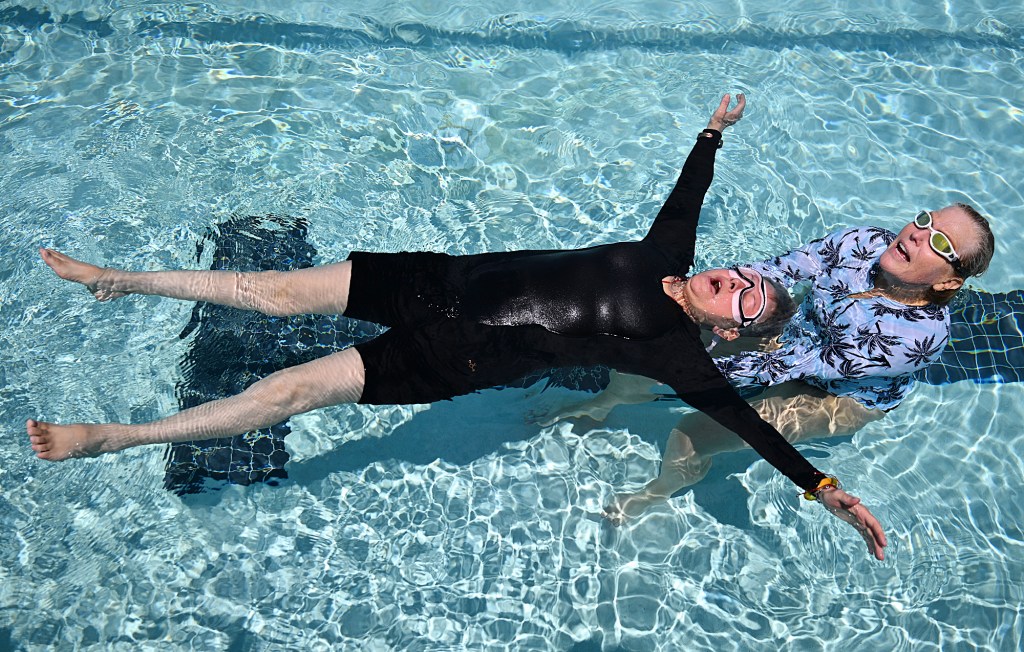
Soaking wet and smiling as they stood poolside at the Walter Graham Aquatic Center in Vacaville, mother and daughter Maria Alvarez and Sue Ortiz shared more than just their participation in the Adult Learn to Swim program.
They each had clear memories of fear they felt as children when they entered the water for the first time — and not by choice.
Alvarez, 52, of Fairfield, recalled being 14, forced into the water, thinking she would drown. Saturday was the first time since that scary moment that she decided to do a swimsuit and goggles and lower herself into a pool.
Ortiz, 34, also of Fairfield, remembered as a 7-year-old being pushed by her cousins into Lake Berryessa. Likewise, she had avoided anything like a pool or lake since.
That is, until Charmaine Lee, a retired Vacaville Unified kindergarten teacher, assured them they would be comfortable and do well during the first of two free weekend 30-minute sessions, with the other scheduled for Sunday. The lessons are a collaboration between the city of Vacaville and the Vacaville Swim Club.
Speaking calmly to the women once in the water, Lee, a Masters swimmer, started with the fundamental lesson: breath control, essentially the “baby step” of overcoming fear of water.
Outfitted with goggles, Alvarez and Ortiz followed Lee’s instructions about breathing and bobbing, including the step-by-step immersion of the chin, nose, face, and head. Next came the blowing of bubbles on the water’s surface and also blowing more bubbles with their faces submerged.
Then came the bobbing, five times, with their hands on the pool’s side, then five times freestanding in about 3 feet of water, all done at the shallow end of the pool. The result? Success, smiles and encouragement all around.
Lee did a quick review and then moved the pair on to Step 2: frontal floating, “recovery” from a horizontal to a vertical stance. After reviewing Steps 1 and 2, Lee began Step 3, the back float, as the noontime air under clear skies reached the mid-70s.
“I’m a floater,” said Lee, as she demonstrated a back float, her face skyward, her arms outstretched from her sides.
By turns Alvarez and Ortiz turned onto their backs, with Lee supporting each woman with her own hands, their faces skyward and arms outstretched. “How’s that feel?” she asked.
And the first day’s lessons came to an end, to be followed Sunday with the “water arm cycle,” front glide, kick, arm cycle and recovery and rolling over in the water. And there would be more during the second 30-minute session: “air exchange,” a single arm stroke, freestyle with one breath and recovery, rollover, freestyle with additional breaths, and swimming into deeper water, and jumping into the water.
Once out of the pool, the two women clearly had overcome their fears of water and appeared ready for more lessons.
“I’m very confident,” said Alvarez. “Charmaine is a good instructor.”
“I liked it,” said Ortiz. “I’m more confident in the water.”
To any adult who wants to learn how to swim, she added, “I would say, ‘Face your fears.’ ”
And for Alvarez, learning how to swim will mean she can share the skill with her grandchildren, who already know how to swim, she said.
Mark Frazier, a retired Vacaville Unified administrator, started an Adult Learn to Swim program (ALTS) two years ago because, he said, some 30 to 35 percent of adults do not know how to swim.
During the lessons, one Masters swimmer, like Lee or Frazier and his wife, Lisa, is assigned to one or three adults. The free outreach program’s aim, said Frazier, is to encourage some of novice adult swimmers to sign up for additional lessons, for a fee, during the summer, starting June 16.
During the summer, Frazier organizes two types of classes that meet three times per week for two weeks. Level 1 is for adults “who are anxious around water and feel like they do not have any swimming skills,” he said “We start with the basics of breath control, floating, kicking, and basic beginning stroke development.”
Level 2 is for adults “who can get in the water but would like to learn more and become more proficient with swimming,” he said. Sign-ups are available at www.cityofvacaville.gov/rec.

Frazier, who swam competitively at Merced College and later at San Diego State University, said most of the adults seek the ALTS lessons “because they want to become water-safe and learn how to swim.”
“Most of the adults also share that their children know how to swim, but they do not,” he added. “Many of the adults did not have the opportunity to swim because there was not a lot of available pool space to learn or they did not have access to lessons when younger or when they were older. Most of the adults we have had in lessons have to start from the very beginning: becoming acclimated to the water, becoming comfortable with their face in the water and blowing bubbles.”
In the past two years, the novice adult swimmers in his classes have ranged in age from their 20s to “up into their 70s,” said Frazier, 66, a certified lifeguard and coach through the Masters and the U.S. Swimming programs.
During the summer, the lessons for adults last six sessions over a two-week period, enough time, he added, to witness “good improvement in all of our swimmers, and we start where they feel comfortable and move on from that point.”
While the ALTS lesson do not cover lifesaving techniques, the instructors teach adults how to be more water safe and how they can be safe in the water.
“We teach them how they can stay afloat and move in the water if they happen to find themselves in the water without a flotation device,” Frazier said. “But we do discuss being water safe and how to be proactive in thinking about water safety.”
His hope after the two-day weekend lessons is for the adults to “see personal improvement having overcome any anxiousness or fear about being in the water. From there, I hope they are motivated to take additional lessons in order to learn more.”
During the last two years of the summer lessons, Frazier said all the adults “have felt a sense of accomplishment in overcoming their fear of the water and improving in their water and swimming skills. We have had a few of our swimmers even move on the the Masters swim program. In two weeks you can see a lot of progress.”
Frazier said he grew up swimming and played water polo in college. And during his undergraduate and postgraduate days, he worked as a lifeguard, taught swim lessons, and coached swimmers.
When he started working in Vacaville Unified, he served as the swim and water polo coach at Will C. Wood High for many years while also working as the school psychologist. Just before retiring, he started coaching swimming again at Wood and continues to do so.

When Frazier moved into district administration, he worked as a district administrator in the roles of assessment coordinator, director of special assignments, and as director of academic advancement.
When not teaching swimming, Frazier helps to care for two granddaughters a couple days a week. He also serves as a commissioner on the Vacaville Parks and Recreation Commission and has been working with some city staffers on other events, such as the Vaca Triathlon for kids (as a volunteer).
Of teaching adults to learn to swim, Frazier said that, more than anything, the emotional rewards are considerable when “working with adults and watching them overcome their fear, realize they can improve, and seeing how much they can learn over the course of their lessons.”
Sports
UTRGV Athletics Graduates 37 After Spring Semester
Story Links RIO GRANDE VALLEY – The University of Texas Rio Grande Valley (UTRGV) Department of Intercollegiate Athletics is proud to announce that 37 student-athletes graduated on Friday and Saturday at the spring semester commencement ceremonies at Bert Ogden Arena. “We are proud of these student-athletes for their hard work and […]

RIO GRANDE VALLEY – The University of Texas Rio Grande Valley (UTRGV) Department of Intercollegiate Athletics is proud to announce that 37 student-athletes graduated on Friday and Saturday at the spring semester commencement ceremonies at Bert Ogden Arena.
“We are proud of these student-athletes for their hard work and commitment,” UTRGV Vice President and Director of Athletics Chasse Conque said. “Today’s graduates have been, and will no doubt continue to be, great ambassadors for the university in the community. Our young people have bright futures ahead of them. We congratulate them and are excited to now call them alumni!”
2025 Spring Graduates
Baseball
Robert Bonilla, Bachelor of Multidisciplinary Studies (minors in criminal justice, sociology, and kinesiology)
Angelo Cabral, Online Instructional Designer Graduate Certificate
Rudy Gonzalez, Bachelor of Business Administration
Francisco Hernandez, Bachelor of Multidisciplinary Studies (minors in kinesiology, criminal justice, and psychology)
Steven Lancia, Bachelor of Science in Kinesiology with a concentration in recreational sports management
Jacob Limas, Bachelor of Multidisciplinary Studies (minors in communication, kinesiology, and psychology)
Evan Maldonado, Bachelor of Human Dimensions of Organizations
EJ Miramontes, Bachelor of Multidisciplinary Studies (minors in psychology, sociology, and communication)
Aaron Sanchez, Bachelor of Science in Criminal Justice
Jacob Sanchez, Master of Business of Administration with a specialization in Entrepreneurship and an Advanced Business Administration Certificate
Men’s Basketball
Hasan Abdul Hakim, Bachelor of Sociology
Howard Fleming, Bachelor of Multidisciplinary Studies (minors in kinesiology, criminal justice, and sociology)
KT Raimey, Bachelor of Human Dimensions of Organizations
Women’s Basketball
Mariam Traore, Bachelor of Communication Studies
Men’s Golf
Juan Luis de Bethencourt Duque, Bachelor of Science in Civil Engineering
Carlos Roldos, Bachelor of Business Administration in Finance
Women’s Golf
Catherine Flores, Bachelor of Science in Exercise Science with a concentration in physical therapy
Madi Ozuna, Bachelor of Business Administration in Management
Maria Jose Ramirez Nunez De Caceres, Bachelor of Multidisciplinary Studies (minors in marketing, management, and graphic design)
Men’s Soccer
Oneeko Allen, Bachelor of Business Administration in Management
Cesar Baltazar, Bachelor of Multidisciplinary Studies (minors in marketing, business administration, and kinesiology
Josue Camacho, Bachelor of Multidisciplinary Studies (minor in business administration, entrepreneurship, and management)
Diego Gomez, Bachelor of Business Administration in Finance
Finn O’Connor, Bachelor of Science in Psychology
Mohammed Shahabodien, Bachelor of Science in Kinesiology with a concentration in coaching
Women’s Soccer
Savannah Frisby, Bachelor of Science in Exercise Science
Anna Frida Groedem, Bachelor of Mass Communication with a concentration in advertising and public relations
Men’s Tennis
Sam Whitehead, Bachelor of Business Administration in Management
Women’s Tennis
Kristal Dule, Bachelor of Economics
Women’s Track & Field/Cross Country
Zoë Adams, Bachelor of Science in Biology
Faith Cruz, Bachelor of Science in Integrated Health Sciences
Kailah Gilmore, Master of Science in Bioethics
Ana Hernandez, Bachelor of Science in Civil Engineering
Emily Martinez, Bachelor of Science in Integrated Health Sciences
Volleyball
Ilana De Assis, Bachelor of Science in Kinesiology
Ingridy Foltran, Bachelor of Science in Civil Engineering
Claudia Lupescu, Bachelor of Business Administration in Marketing
Support UTRGV Athletics | Become a Fan on Facebook | Follow us on Twitter | Follow us on Instagram | Follow us on YouTube
-

 College Sports3 weeks ago
College Sports3 weeks agoDuke basketball's Isaiah Evans on 2025 NBA Draft early entry list
-

 Fashion2 weeks ago
Fashion2 weeks agoHow to watch Avalanche vs. Stars Game 7 FREE stream today
-

 High School Sports1 week ago
High School Sports1 week agoWeb exclusive
-

 Sports1 week ago
Sports1 week agoPrinceton University
-

 Sports1 week ago
Sports1 week ago2025 NCAA softball bracket: Women’s College World Series scores, schedule
-

 Motorsports1 week ago
Motorsports1 week agoBowman Gray is the site of NASCAR’S “Advance Auto Parts Night at the Races” this Saturday
-

 NIL1 week ago
NIL1 week ago2025 Big Ten Softball Tournament Bracket: Updated matchups, scores, schedule
-

 Motorsports2 weeks ago
Motorsports2 weeks agoMOTORSPORTS: Three local track set to open this week | Sports
-

 NIL1 week ago
NIL1 week agoPatty Gasso confirms Sophia Bordi will not finish season with Oklahoma softball
-

 Motorsports1 week ago
Motorsports1 week ago$1.5 Billion Legal Powerhouse Announces Multi-Year NASCAR Deal With Kyle Busch

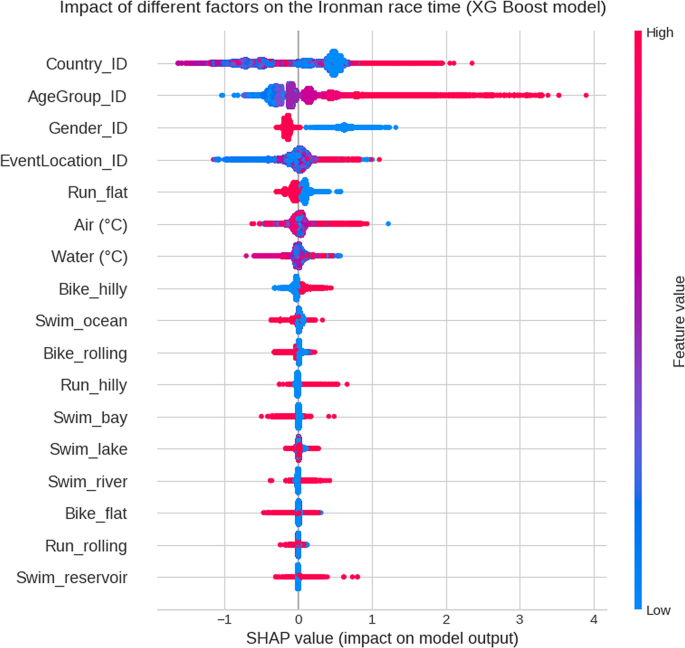
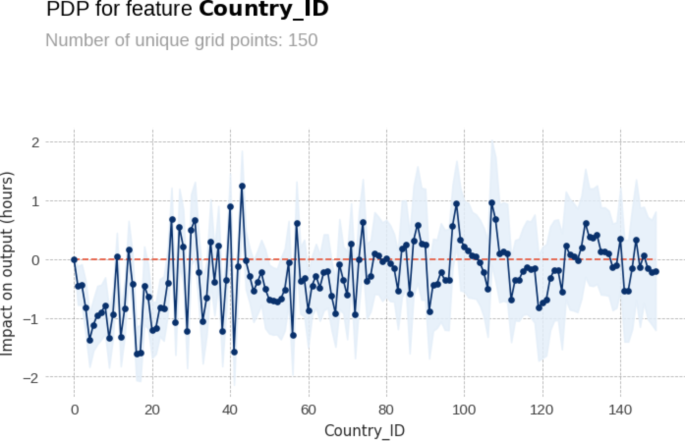





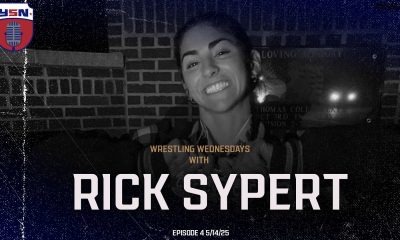



















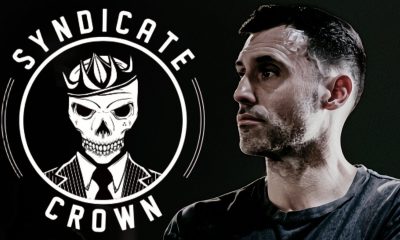










 | #Shorts
| #Shorts



 – RC on Rodgers’ HOLDOUT w/ the Pittsburgh Steelers
– RC on Rodgers’ HOLDOUT w/ the Pittsburgh Steelers  | Get Up
| Get Up














